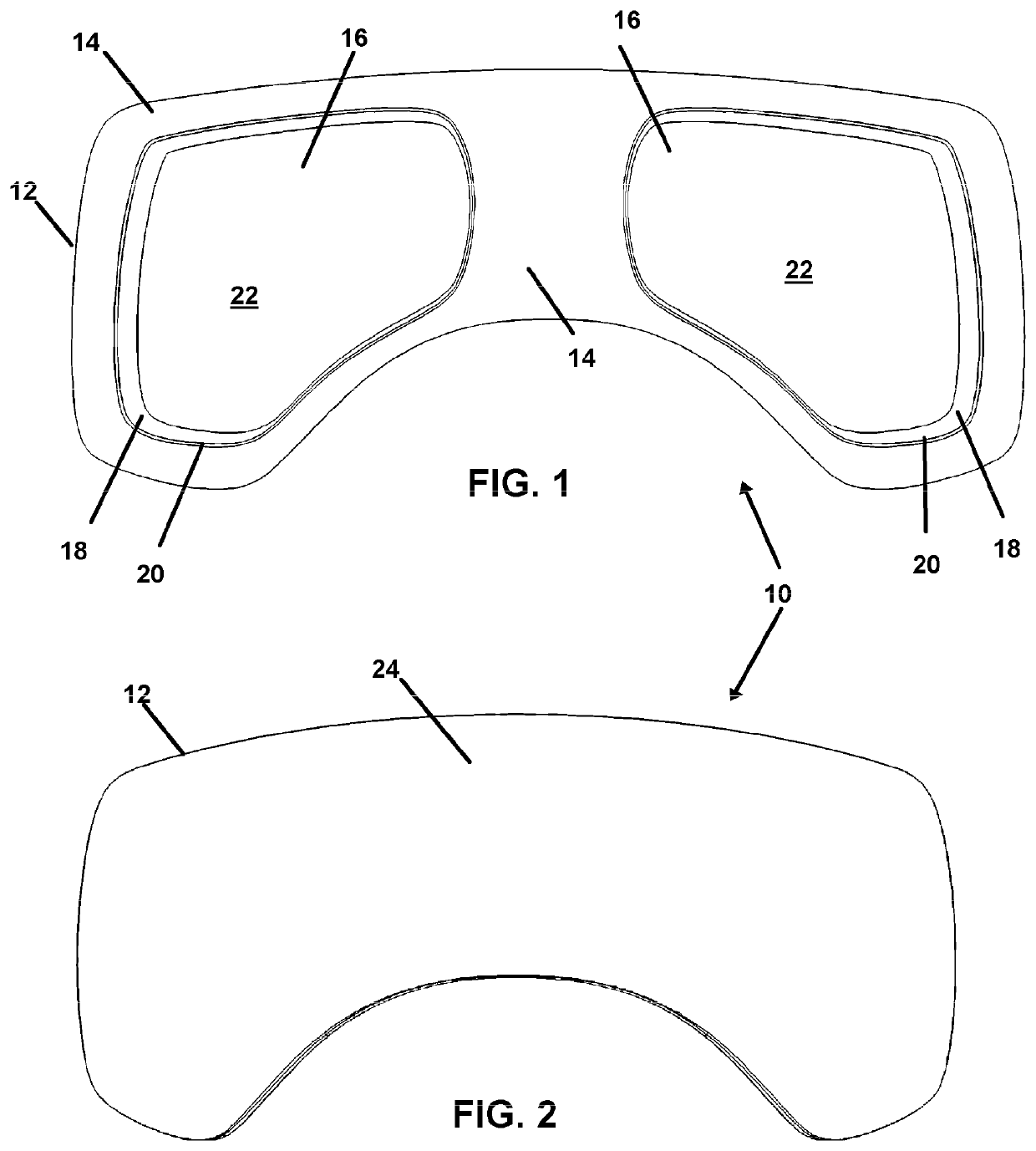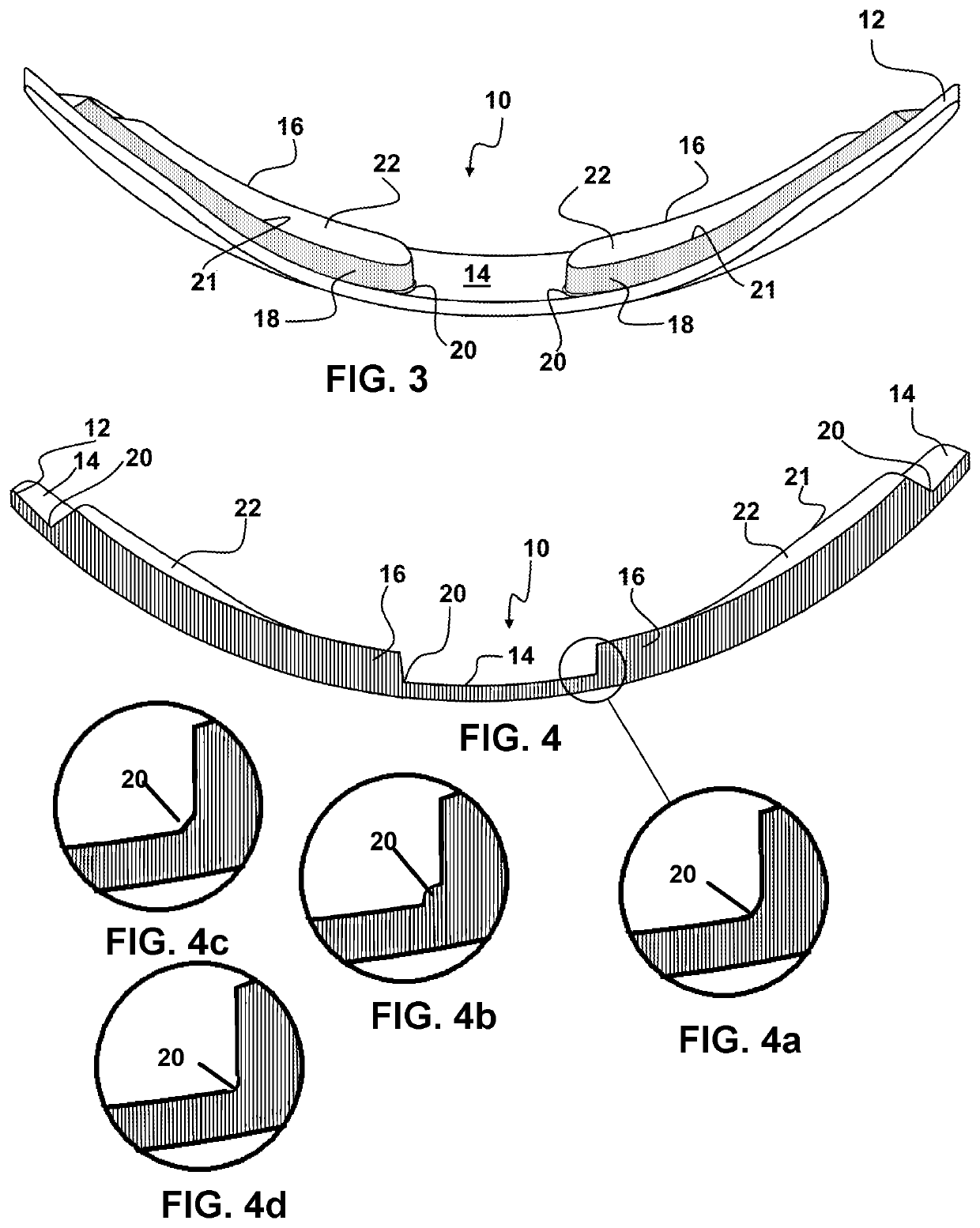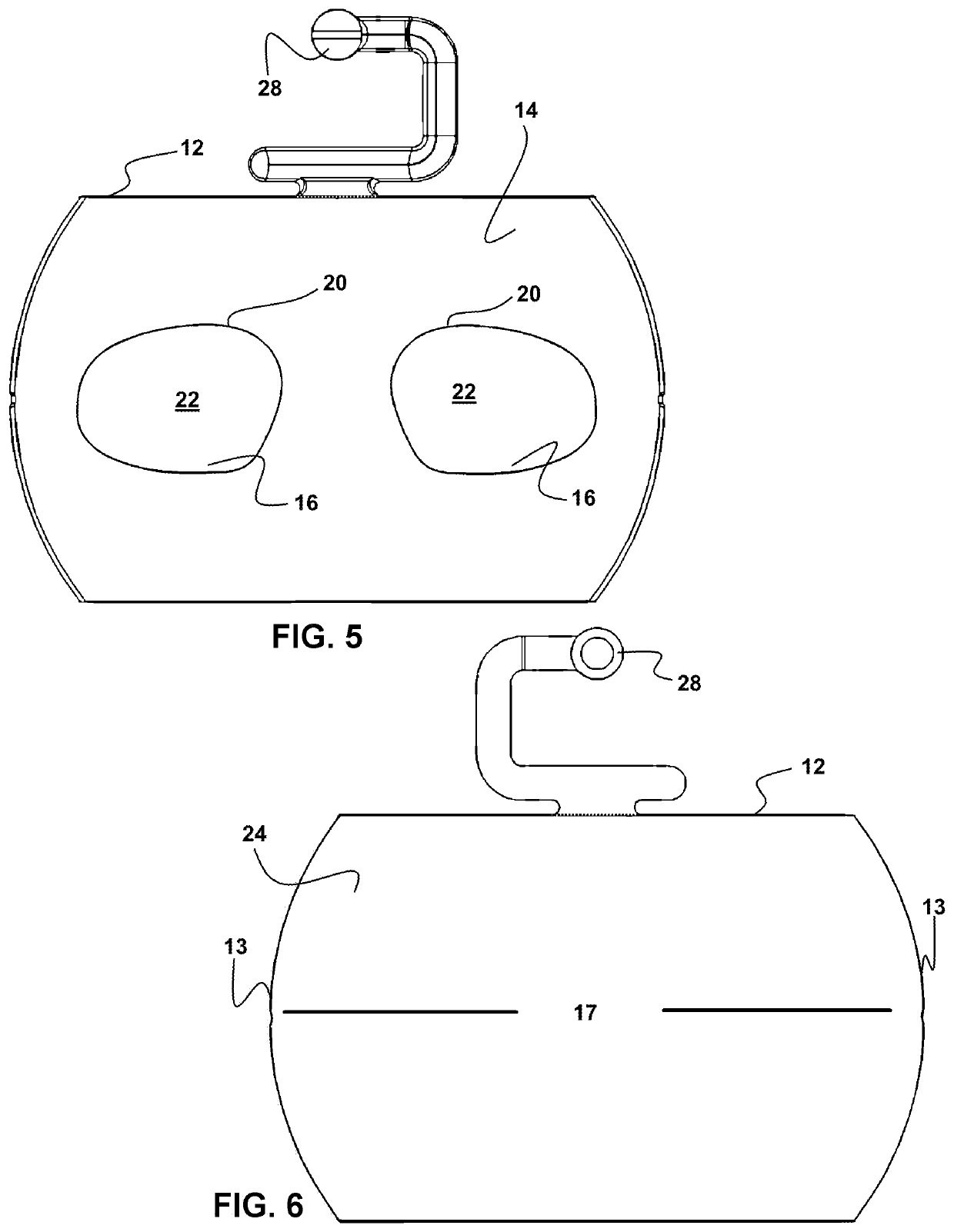Corrective lens apparatus and method
a technology of corrective lenses and lenses, applied in the field of corrective lenses, can solve the problems of poor adaptability, thick lenses, and inadequate nature of corrective lenses, especially in combination with safety or protective eyewear, and achieve the effect of protecting from fogging and high glar
- Summary
- Abstract
- Description
- Claims
- Application Information
AI Technical Summary
Benefits of technology
Problems solved by technology
Method used
Image
Examples
Embodiment Construction
[0056]Now referring to drawings of FIGS. 1-19, where similar structures are described with like numerals there is seen in FIG. 1 depicts a view of a mode of the device 10 having a unitary structured lens, formed of a first lens portion 12 having a first surface 14, and having at least one, or as shown preferably a plurality of projecting or projecting portions 16 extending therefrom. The projecting portions 16 have a shape defined by a perimeter formed by a sidewall 18 which extends away from an intersection 20 at a first end of the sidewall 18, with the first surface 14 of the first lens portion 12. The sidewall 18 of each projecting portion 16 extends to a distal end, at an intersection with the edge of a projecting surface 22 formed within the perimeter defined by the sidewall 18. The projecting surface 22, is adapted for formation of an ophthalmic lens to correct the vision of a user or wearer.
[0057]A particularly preferred shape of the projecting portions 16 is shown in FIG. 1....
PUM
 Login to View More
Login to View More Abstract
Description
Claims
Application Information
 Login to View More
Login to View More - R&D
- Intellectual Property
- Life Sciences
- Materials
- Tech Scout
- Unparalleled Data Quality
- Higher Quality Content
- 60% Fewer Hallucinations
Browse by: Latest US Patents, China's latest patents, Technical Efficacy Thesaurus, Application Domain, Technology Topic, Popular Technical Reports.
© 2025 PatSnap. All rights reserved.Legal|Privacy policy|Modern Slavery Act Transparency Statement|Sitemap|About US| Contact US: help@patsnap.com



